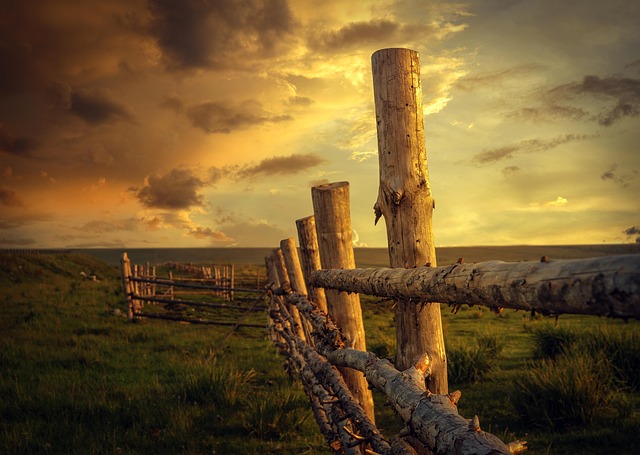Large properties present unique challenges when it comes to fencing, with an emphasis on durability, scalability, and affordability. This article explores cost-effective fencing solutions tailored for extensive land areas. We delve into understanding specific needs, comparing traditional methods with innovative alternatives, and highlighting durable materials that require minimal maintenance. Additionally, creative design options are presented within budget constraints, accompanied by practical installation tips ensuring longevity and maximizing savings. Long-term maintenance strategies are also discussed to keep your cost-effective fence in top condition.
- Understanding Fencing Needs for Large Properties
- Traditional Fencing vs. Cost-Effective Alternatives
- Durable and Low-Maintenance Materials
- Creative Design Options on a Budget
- Installation Tips for Longevity and Savings
- Maintaining Your Cost-Effective Fence Long-Term
Understanding Fencing Needs for Large Properties
Fencing large properties presents unique challenges compared to smaller plots. The extent of the land, diverse terrain, and often, specific security requirements necessitate tailored solutions. Property owners must consider both aesthetic appeal and functional needs when choosing a fencing system. A comprehensive understanding of these requirements is pivotal for selecting an efficient, cost-effective solution that aligns with the property’s character and enhances its overall value.
Key factors in defining fencing needs include identifying desired privacy levels, visual aesthetics, durability against weather conditions, security measures, and potential maintenance considerations. Large properties might also require fences that accommodate specific activities like livestock grazing or provide access for emergency vehicles. Addressing these aspects enables homeowners to invest in the right fencing solution, ensuring both functionality and cost efficiency.
Traditional Fencing vs. Cost-Effective Alternatives
Traditional fencing methods can be expensive and often involve complex installations, making them less appealing for large properties with significant perimeters. The good news is that there are now numerous cost-effective alternatives available that offer both functionality and aesthetics. These modern options cater to diverse budgets while providing durable and visually appealing barriers.
One such alternative is the use of flexible, high-density polyethylene (HDPE) fencing. This material is not only lightweight but also highly resistant to rust and rot, making it an excellent choice for outdoor environments. HDPE fencing can be easily installed, saving on labor costs, and its low maintenance requirements further reduce long-term expenses. Another innovative solution are pre-fabricated metal panels that offer a sleek, modern look while providing superior security. These panels are quick to install, reducing construction time and associated costs, making them ideal for large-scale projects.
Durable and Low-Maintenance Materials
When considering fencing for large properties, choosing materials that are both durable and low maintenance is essential. Modern fencing options offer a range of materials, from traditional woods to innovative composites and metal alloys. These advanced materials are designed to withstand harsh weather conditions, resist rot and decay, and require minimal upkeep, making them ideal for expansive spaces.
For instance, vinyl fencing has gained popularity due to its durability, low maintenance, and visual appeal. It is resistant to chips, cracks, and fading, ensuring a long-lasting finish. Similarly, metal fences, often galvanized or powder-coated, offer exceptional strength and resistance to corrosion, making them suitable for coastal areas or regions with high moisture levels. These materials contribute to a longer lifespan and reduced maintenance costs over time.
Creative Design Options on a Budget
When it comes to fencing large properties on a budget, creativity can be your secret weapon. Instead of opting for generic and plain barriers, consider unique design options that can transform your fence into an attractive feature. For instance, instead of traditional wooden posts and rails, explore the idea of curved or angled panels, adding an architectural flair. You can also incorporate different textures and finishes, such as weathered wood effects or metal accents, to give your fence a distinct look without breaking the bank.
Budget-friendly doesn’t mean sacrificing style; it’s about being resourceful. Think about using reclaimed materials like old doors or windows for creative gate designs, or opt for artificial options that mimic natural elements at a fraction of the cost. Additionally, consider vertical gardening techniques by integrating plants along the fence, providing both aesthetic appeal and practical benefits. These innovative ideas can make your large property stand out while staying true to your financial constraints.
Installation Tips for Longevity and Savings
When installing fencing for large properties, focusing on longevity and cost-effectiveness starts with proper planning. One key tip is to choose materials that can withstand the unique challenges of your region’s climate and landscape. For instance, in areas prone to strong winds, a solid, heavy-duty fence may be more suitable than a lightweight alternative. Additionally, consider the accessibility of materials; sourcing locally can reduce transportation costs, making your project more budget-friendly.
For durability, ensure your fence posts are firmly anchored into the ground using concrete foundations. This technique prevents post shifting over time, maintaining the structural integrity of your fence. Regular maintenance, such as cleaning and inspecting for damage, is also crucial. Keeping your fence well-maintained will not only extend its life but also preserve the initial investment you made in these cost-effective fencing solutions.
Maintaining Your Cost-Effective Fence Long-Term
Regular maintenance is key to keeping your cost-effective fence in top condition for years to come. This includes routine inspections to identify any signs of wear and tear, such as loose or damaged panels, posts, or hardware. Early detection allows for quick repairs, preventing minor issues from escalating into costly replacements.
Simple care practices like cleaning the fence regularly with mild detergent and water, brushing away debris, and re-applying weatherproof coatings can significantly extend its lifespan. Additionally, ensuring proper drainage around the fence helps prevent moisture damage, especially in areas prone to heavy rainfall or snowmelt.
